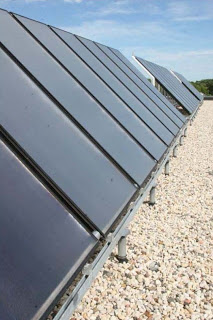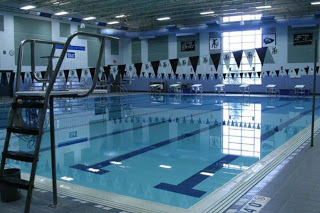by jboullion | Dec 24, 2009 | Uncategorized
From an article by Kristin Tillotson in the Minneapolis Star Tribune:
As the biggest storm of the season so far descends on the Twin Cities, some lucky homeowners are getting expert help battening down the hatches and lowering their utility bills. The bonus? It’s costing them peanuts.
The Center for Energy and the Environment (CEE) in Minneapolis and Neighborhood Energy Connection (NEC) in St. Paul, both nonprofits dedicated to energy efficiency, began pilot programs in the fall in select neighborhoods. Their crews replace light bulbs, wrap fiberglass blankets around water heaters and weatherstrip doors. All the homeowners receiving these customized services had to do was attend a free workshop, then pay $30. Besides the installed products, they get utility-bill savings averaging $127 a year.
Xcel Energy Inc. and CenterPoint Energy pay both programs’ labor costs as part of their efforts to meet state-mandated conservation goals. But in January the two utilities will begin offering Home Energy Squad, their own joint program, to other customers in the seven-county metro area. It will be a limited version of the neighborhood-focused visits offered by NEC and CEE, and will expand over the next three years. You must be a customer of Xcel electric and either Xcel gas or CenterPoint gas to be eligible. This is the first time the utilities have collaborated on such a broad scale, said Todd Berreman, who oversees CenterPoint’s conservation programs.
by jboullion | Dec 8, 2009 | Uncategorized
From a post on the Fixer-Upper Blog:
With the winter season upon us, the high heating expenses are not far behind. There was a time when the only to combat them was to stay away from the heater and suffer. However, in recent times there have been loads of advances in conservation, efficiency, and technology. Below are 8 painless ways to cut your electric bill that require a little time, less money, and can end up saving you hundreds, or perhaps thousands, of dollars across a short span of time.
1.Strip : According to the experts at Lowe’s, a 1/8″ space between a standard exterior door and its threshold is equivalent to a two square inch hole in the wall. Closing those gaps can save you up to 15% in heating costs and reduce the demand on your heating system. They also offer a guide on how to accomplish this at the beginner level. Only three tools, three materials, and a day is all it requires to weatherstrip your entire home.
2.Dodge The Draft : Cold air can seep in through your front, rear, or any entryway door. One of the best ways to deal with this is to install a draft dodger. As Seen On TV sells one for a considerable price. However, Green Upgrader shows you how to make one of your own at a fraction of the cost. All you need is some fabric and sewing supplies.
3.Find An Outlet : Another way drafts go in and out of the home is through the outlet and outlet covers, particularly the ones along exterior walls. Not to worry, there are special outlet and switch gaskets specially made to significantly reduce drafts. This store sells an entire kit for only $1.94.
4.Insulate : Water needs to be heated in the winter as well, so don’t throw money away by not insulating. If your water heater’s storage tank has a R-value of under R-24, adding insulation can reduce heat loss by 25-45%. The U.S. Department of Energy has tips on how to insulate both electric and gas heated water tanks. There are also other useful related guides.
5.Go Tankless : If you’re in the market for a new water heater, try a tankless one. They create hot water on demand so there’s no stored water needing to be continuously heated. They cost about $200 more than a standard water heater. However, the money you save by cutting your electric bills, especially in winter, can add up to that difference in just a few years. In addition, certain tankless heaters can qualify for up to a $1,500 tax credit.
6.Reflect On It : Radiator reflectors are insulation boards with aluminum or material on one side. When placed on the wall behind the radiator unit, they reflect heat back into the room, instead of allowing the heat to escape. An easy install for anyone looking to cut bills. They are also an inexpensive purchase at a hardware store, or you can make your own.
7.Program the Problems Away : A programmable thermostat allows you to set different temperatures for different times of the day, and even different times on different days. Cut your winter electric bills by setting it to automatically lower the temperature when you leave for work and raise it an hour before you return home. The DIY network shows you how to choose one and install it yourself, all in less than two hours.
8.Watch Out For Carbon Monoxide : The leading cause of poisoning accidents in the United States, a common cause of it is poorly maintained heating systems. Also, since the symptoms seem like the flu, it is not taken seriously. This video from WebMD show you how to prevent and detect it. Don’t waste the money you saved on winter electric bills with costly medical ones.

by jboullion | Dec 7, 2009 | Uncategorized


The solar water heating systems serve Fort Atkinson high school and the middle school. The radiant energy striking the rooftop panels year-round is efficiently collected and taken inside to preheat the swimming pools inside each structure. Except during the winter months, the incoming solar energy is sufficient to maintain pool temperatures at 84°F. Even in January, however, the savings that a solar hot water system yields simply by preheating a pool to 70°F is substantial when multiplied over several decades.
From a story by Michael Vickerman, RENEW’s executive director:
As a result of educating themselves on the connection between energy use and atmospheric pollution, several school districts in Wisconsin are taking increasingly aggressive steps to conserve energy as well as produce a portion of what they use on-site. Some have embraced ground source heat pump systems (Fond du Lac High School), while others have installed solar hot water systems (Osceola Middle School) and solar electric systems (Paul Olson elementary school in Madison). Not to be outdone, Wausau East High School recently installed a 100 kW Northwind turbine, which is now the largest wind generator attached to a school building in Wisconsin.
Yet if one measures success by substantial reductions in energy expenditures and emissions reductions, there is one school district in Wisconsin that stands head and shoulders above its peers: Fort Atkinson. Serving 2,700 school-age children in a community of 12,000, the Fort Atkinson School District operates six buildings: four elementary schools, one middle school and a high school. School officials have made no secret of their aspiration to make Fort Atkinson the most energy-efficient and self-sufficient K-12 district in the state.
Since 2005, Fort Atkinson has rigorously pursued a sustainable energy agenda that integrates, in a systematic and complementary fashion, continuous monitoring of consumption, aggressive building efficiency measures, and renewable energy capture. As articulated in its 2009 energy plan, the district, the district’s principal goals for 2010 are nothing if not ambitious:
+ Pare energy costs by 20% from 2005 levels;
+ Lower carbon emissions by 25% from 2005 levels;
+ Obtain EnergyStar certification for all six schools; and
+ Install on-site renewable production at all six schools.

by jboullion | Dec 7, 2009 | Uncategorized
 The Koerner’s installed the domestic hot water system (right)in March 2006. It also provides a portion of the heat for the house.
The Koerner’s installed the domestic hot water system (right)in March 2006. It also provides a portion of the heat for the house.
Sun Harvest Farm, owned by Jerry and Penny Kroener, Ridgeway, WI
Renewable Energy Projects
September 2009 Update
General:
In 2005 we embarked on major renovations and additions to our old farmhouse. This included working with Focus on Energy to have site assessments performed for Solar Photovoltaic, Solar Thermal and Wind Turbine Systems. We also investigated wood burning systems because we have substantial quantities of firewood on our property. Our decisions included the following:
1. Add additional insulation, all new windows and new doors.
2. Replace our old oil burning furnace with a high efficiency propane boiler (our little Munchkin).
3. Install a Solar Photovoltaic grid-connected system to produce electricity.
4. Install a Solar Thermal (hot water) system to preheat domestic hot water and provide some house heat.
5. Install a counter-flow masonry heater fireplace using our own limestone for the masonry cladding.
6. In 2008 we built and installed a hot air collector to provide some heat in our barn workshop.
7. In 2009 we installed our 2nd Photovoltaic grid-connected system.
8. In 2009 we also upgraded our solar hot water storage tank.
Continued
by jboullion | Dec 4, 2009 | Uncategorized
From an article by Julie Lawrence posted on OnMilwaukee.com:
The temperatures outside are plummeting. It’s winter in Wisconsin and the cozy comfort of our homes becomes our refuge after hours of shoveling and ice scraping. What we’re forced to endure in the Midwest could be considered criminal in other parts of the country, but the real crime Wisconsinites face is not adequately preparing their homes for the seasons.
Kent Borden has been an energy audit consultant for Five Star Energy Corp. for close to three years and he’s seen homes at just about every level of efficiency. Interestingly, it’s not that most people aren’t willing to work to limit energy loss, it’s that they don’t fully understand its source.
Wisconsinites often misinterpret old windows as the major culprit. Borden says not necessarily. While windows are a very visible part of the home, Borden says our notion that they are leaking like sieves is largely thanks to window manufacturers who like to portray that message.
“I don’t want to completely refute what they’re saying; windows certainly can be a factor.”
But, he says, a homeowner planning to drop $10,000 to $15,000 on new windows will never see the payback in energy savings.
So if the windows aren’t the biggest energy loss offenders, what are?



